stu929
Shohin
That is fantastic to know!I’ve seldom(If ever) run into an OL (Original Leo) MIS-identification...
And OL ID... is generally an “Ace in the Hole.”
That is fantastic to know!I’ve seldom(If ever) run into an OL (Original Leo) MIS-identification...
And OL ID... is generally an “Ace in the Hole.”
Gotta draw a heptagon on the floor, burn palo santo wood, chanting @Leo in N E Illinois ! While holding powdered Raven’s beaks in your LEFT hand.Paging Leo, is Leo in the house ?
I was walking the treeline at the back of my property and noticed 3 or 4 of these there. The other weeds have died do these stuck out like a sore thumb. Still very green and alive while everything else seems to be going to sleep.
Is this an Amur honeysuckle? And should I try bonsai it or just kill it because of it being invasive?
I grabbed this today for $20 & the guy at the nursery didn't know what it was. It was interesting enough so I grabbed it. It makes a little green berry of sorts. Any ideas? Thanks.
If the fruit is soft, translucent, juicy red berry, it is most likely Amur honeysuckle. I'm 90% positive that this is the identity.Paging Leo, is Leo in the house ?
I was walking the treeline at the back of my property and noticed 3 or 4 of these there. The other weeds have died do these stuck out like a sore thumb. Still very green and alive while everything else seems to be going to sleep.
Is this an Amur honeysuckle? And should I try bonsai it or just kill it because of it being invasive?
Nah! I think it is, as Goldilocks would say, “juuuuust right.”Or is that over sharing?
Gotta draw a heptagon on the floor, burn palo santo wood, chanting @Leo in N E Illinois ! While holding powdered Raven’s beaks in your LEFT hand.
The Amur Honeysuckles that grow by me are distinguishable from the others by darker, Purplish stems/branches. But this is most likely specific to my climate AT time of observation.. “OL” (original Leo) will know... I’m “oL”... (other Leo)

If the fruit is soft, translucent, juicy red berry, it is most likely Amur honeysuckle. I'm 90% positive that this is the identity.
If the berry has a firm skin, opaque, with dry, mealy yellow flesh inside, it could be an Ilex or a Cornus. All in all, I am pretty confident with Amur honeysuckle, Lonicera maackii, or one of the related Lonicera species.
To get OL, just use the @Leo in N E Illinois tag. It serves as the "bat signal", if I am not tied up elsewhere, I will respond.
Sometimes I am away for a day, or two.
Tied up, can be bad, or sometimes, can be good. Or is that over sharing?
I'm not great at this but I would guess a mugo?Probably a very easy ID request for those who know pines (I'm pretty sure they're pines?!) they are not a species I've been interested in so far.
My parents are (hopefully) buying a house, and these two are in the front garden. May take some cuttings at some point!
Anyone offer a specific name?
Could be blackthorn Prunus spinosa, the distance between fat bud and thorn..lenticles also suggest roseaceae..?Does anyone recognize these thorns ? Large tree growing out from under my parents deck, I was thinking about digging it up.
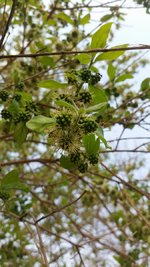
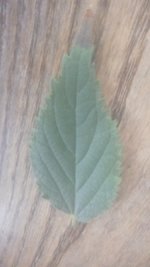
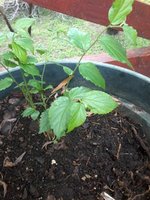
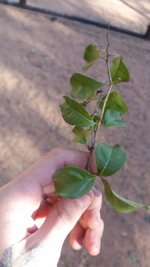
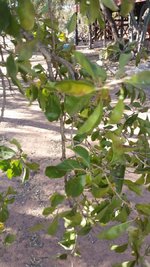
Cheers for this - looks like you could be right!I'm not great at this but I would guess a mugo?
Does anyone recognize these thorns ? Large tree growing out from under my parents deck, I was thinking about digging it up.
We have had a lot of wind so almost no leaves on anything in my area now. I guess I'll have to wait till spring.You are in Pennsylvania, so I doubt it is Prunus spinosa. Prunus spinosa is strictly European species, though it could be in the USA as an invasive species.
One of the native hawthorns, genus Crataegus is a guess. Actually a hawthorn is my top guess.
Another possibility, if it has compound leaves in summer it might be a Gleditsia triacanthos, the Honey Locust.
Buckthorn form their thorns as aborted branches. The your not usually independent thorns. But buckthorn is certainly a maybe.
Leo you made me wonder if this is just a plant I’d read about and or know it personally here. Still could be both, not sure. Found three sites with range maps including usda with spinosa here and in PA, they all look relatively the same distribution-wise but interestingly with big gaps from state to state distribution.You are in Pennsylvania, so I doubt it is Prunus spinosa. Prunus spinosa is strictly European species, though it could be in the USA as an invasive species.
One of the native hawthorns, genus Crataegus is a guess. Actually a hawthorn is my top guess.
Another possibility, if it has compound leaves in summer it might be a Gleditsia triacanthos, the Honey Locust.
Buckthorn form their thorns as aborted branches. The your not usually independent thorns. But buckthorn is certainly a maybe.
Thank you , these are definitely not SA species nothing that I have seen or heard of atleast@Paches - wow, another member from South Africa, welcome. SA is in the house.
I'm not real good on SA flora, or fauna for that matter. But I'll take a stab at it.
#1 - beats the heck out of me. It has to be something indigenous to SA or maybe an exotic from Australia. Its nothing I've ever seen in my wandering North America.
#2 - I'm pretty sure both #2's are Celtis, possibly Celtis africana. They grow fast and make good bonsai, very much similar to an Elm, at least horticulturally and bonsai style wise.
#3 - I would guess one of the South African species of Diospyros. Possibly Jackalberry. There are 2 or 3 species of Diospyros native to SA. Or it could be something like Kooboo berry. I forget the botanical latin name for Kooboo berry.
Are any of the other members from South Africa following this thread? Help?
